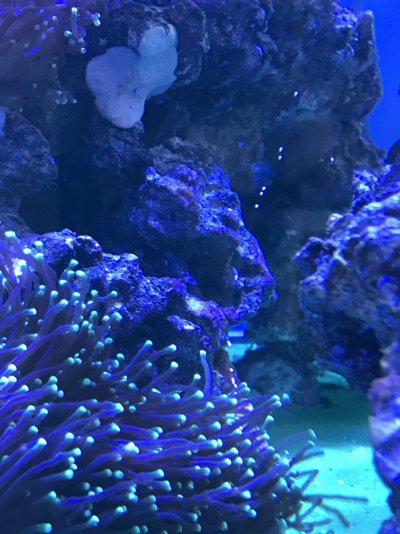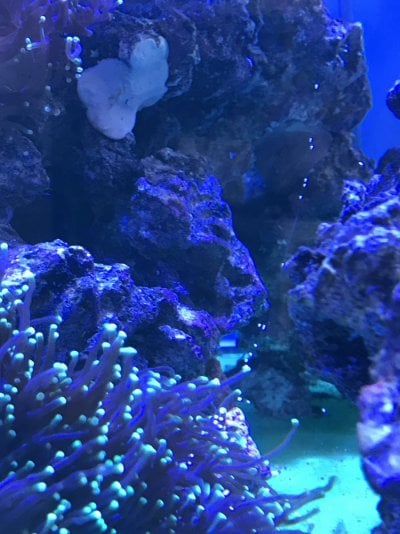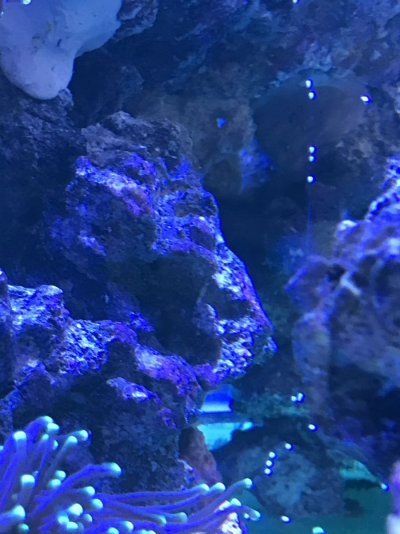Official summary of cycles we see in reefing:
-dry rocks and wet sand:
add in bottle bac, a pinch of feed, an approximation of liquid cycling ammonia (exact dose not required, 2 ppm is NOT required that makes a lot of nitrate at the end) and your cycle is done when the bottle bac directions say it’s done, change out the water and begin (in case the ammonia approximation ran high, it’s less algae nitrate fuel water for early tank uglies to use)
-live rocks moved home from a pet store:
do nothing, add to a tank and it’s ready, these are already cured. Transferring live rocks tank to tank never dies off, never loses bacteria. It never spikes in ammonia. if you mix live and dry, you revert to live rock cycling mode not the dry one above. Adding a bunch of ammonia to live rocks burns the animals we paid to keep alive and make use of. The inert surfaces will be fully cycled in twenty days (cycling chart time) by mere association with live rock in the same water.
-uncured rocks
see above, it’s cpr water changes until they smell normal, ten days is about right and several water changes later. Don’t add bottle bac, you just paid for the best there is already attached. Bottle bac does not stop dieoff, things will now die because they’re not in the ocean, or shipped in air. bottle bac doesn’t fix that. If you choose to add prime initially that’s neutral. Doesn’t matter if you do or don’t, we use water changes before rot sets in therefore your additives will just be cast out anyway. The bacteria are never dead on uncured rocks, the curing process actually temporarily boosts them for obvious reasons
at no point in any of these cycles can you trust your test kits to help you, or agree with me. What you can trust your test kits to do is lead you to a pet store, for a purchase.
a recurring theme in any work thread Im in is assuring someone their cycle is done when a test kit says it isn’t but not as a guess, my criteria are different than the retail loop. Every job done in every work thread is from the set of four options above
-dry rocks and wet sand:
add in bottle bac, a pinch of feed, an approximation of liquid cycling ammonia (exact dose not required, 2 ppm is NOT required that makes a lot of nitrate at the end) and your cycle is done when the bottle bac directions say it’s done, change out the water and begin (in case the ammonia approximation ran high, it’s less algae nitrate fuel water for early tank uglies to use)
-live rocks moved home from a pet store:
do nothing, add to a tank and it’s ready, these are already cured. Transferring live rocks tank to tank never dies off, never loses bacteria. It never spikes in ammonia. if you mix live and dry, you revert to live rock cycling mode not the dry one above. Adding a bunch of ammonia to live rocks burns the animals we paid to keep alive and make use of. The inert surfaces will be fully cycled in twenty days (cycling chart time) by mere association with live rock in the same water.
-uncured rocks
see above, it’s cpr water changes until they smell normal, ten days is about right and several water changes later. Don’t add bottle bac, you just paid for the best there is already attached. Bottle bac does not stop dieoff, things will now die because they’re not in the ocean, or shipped in air. bottle bac doesn’t fix that. If you choose to add prime initially that’s neutral. Doesn’t matter if you do or don’t, we use water changes before rot sets in therefore your additives will just be cast out anyway. The bacteria are never dead on uncured rocks, the curing process actually temporarily boosts them for obvious reasons
at no point in any of these cycles can you trust your test kits to help you, or agree with me. What you can trust your test kits to do is lead you to a pet store, for a purchase.
a recurring theme in any work thread Im in is assuring someone their cycle is done when a test kit says it isn’t but not as a guess, my criteria are different than the retail loop. Every job done in every work thread is from the set of four options above
Last edited:



















